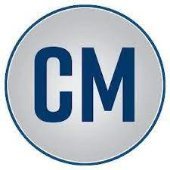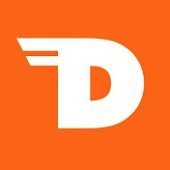-
Welcome to Auto Parts Forum
Whether you are a veteran automotive parts guru or just someone looking for some quick auto parts advice, register today and start a new topic in our forum. Registration is free and you can even sign up with social network platforms such as Facebook, X, and LinkedIn.
MAHLE Motorsport To Sponsor All SEGA Classes For 2022
-
Similar Topics
-
By Counterman
One of the more difficult things about any technology is all the new terms you seem to get hit with, and in the automotive world, CAN bus was one of those terms. The second half, “bus,” was a term we had already used for many years, primarily as “bus bar.” A bus bar was a metal strip or bar that distributed power among multiple components.
In the automotive world, even when fiber-optic turn-signal indicators mounted on the front of a fender were as high-tech as it got, bus bars were inside many components such as fuse panels and relays, and sometimes under the hood for various engine electronics.
Then computer electronics took over. At first, we just had one electronic control unit (ECU) to deal with, and it was for the engine. Before you knew it, there was a transmission control unit, then the ABS control unit (not necessarily in that order). Wiring harnesses got bigger … and bigger and bigger.
Today, a car can have as many as 150 ECUs. In addition to the familiar engine, transmission, brake and airbag control units, doors, seats, mirrors, power steering, audio systems, cruise control, batteries and charging management systems all have their own control units. And as you can imagine, that’s just scratching the surface.
As technology was taking a ride with all these systems, engineers realized there were too many wires and too many sensors. There was no choice but to get aboard the CAN bus. CAN stands for controller area network, and a CAN bus, simply put, is a common communication line that can be used by all ECUs on the network.
The various control units on a modern vehicle need to communicate and share information over this network. Here’s an example of how and why. Years ago, when you turned on the air conditioning, a simple switch sent power to the compressor clutch. Today, the HVAC control module may need to communicate with the body control module (BCM) to notify it that A/C has been requested.
The BCM in turn sends a request to the engine control module (ECM) to “ask permission” if it can energize the A/C-compressor relay. The ECM looks at current engine operating parameters and sends a response signal to the BCM, which, in turn, sends a signal to the A/C relay.
The technological features on today’s cars are nothing short of impressive. Advanced driver-assistance systems (ADAS) include features such as adaptive cruise control, forward collision warnings, high-beam safety, lane-departure warnings, traffic-signal recognition, lane-keep assistance, automatic emergency braking and traction control.
All of the associated control units are in constant communication with each other, and since many of them must utilize information from the same sensors, through the CAN bus network this is possible. Instead of an ambient-temperature sensor for the ECM, the HVAC control unit and the instrument cluster, one sensor can share its data over the network.
Some high-end vehicles have a feature called automatic brake wiping, or brake disc wiping. This feature utilizes information from a rain sensor (also used by automatic windshield wipers) that’s sent over the CAN bus to the ABS control unit. In programmed intervals, the ABS control unit lightly applies the brakes in a manner that the driver won’t notice, to clear water and moisture away from the rotors and provide maximum braking when needed. All of this is only possible thanks to the communication available over the CAN bus.
Developing the CAN bus system was no simple feat, and it took many years to complete. The requirements for automotive CAN bus communication are standardized as part of the OBD II vehicle communication standard. There have been many changes over the years related to CAN communication, primarily affecting the speed and manner in which data is transmitted. The easiest way to think about it is to relate it to the changes over the years in USB design we’re all familiar with. It’s for the same reason. They transmit data quicker.
From a service standpoint, technicians have had to become familiar with CAN bus systems. U-codes that indicate a loss of communication between modules or on a specific bus are a tool designed to help technicians diagnose CAN bus problems.
Electrical wiring diagrams reflect the CAN bus network, and there are three different types of networks – loop, star and loop/star hybrid – referred to as CAN bus topology. Being able to recognize the type of topology can help a technician diagnose CAN bus errors quicker. In today’s world, we all have to get aboard the CAN bus.
The post
link hidden, please login to view appeared first on link hidden, please login to view.
link hidden, please login to view -
By Counterman
March 4 is the deadline to register for four upcoming University of Aftermarket courses through Northwood University.
“These courses offer aftermarket-focused business, management and leadership education for motor vehicle aftermarket professionals,” said Dr. Thomas Litzinger, executive director of the University of Aftermarket and aftermarket industry chair at Northwood University. “We are pleased to offer industry-specific professional development to those working in the industry.”
Four upcoming courses – Consumer Behavior; Selling & Sales Management; The Culture of Leadership; and Aftermarket Field Sales Management — are scheduled to take place from March 18 through May 12.
Aftermarket Field Sales Management
The Aftermarket Field Sales Management course examines the field sales manager’s job activities. Subjects include selling skills; expense management; time management; merchandising/advertising plans; sales-report writing/sales-forecast plans; tradeshow management; and human resource skills.
The Culture of Leadership
The Culture of Leadership course consists of an analysis of organizational factors that influence leadership and management skills. Key aspects include formal and informal groups; norms; sanctions; organizational change; morale; function of committees and teams; role of unilateral decisions; teamwork, empowerment; and ethical philosophy.
It also includes a self-appraisal of leadership and management strengths and areas for development.
Selling & Sales Management
The Selling & Sales Management course will develop students’ competencies in professional selling theory and approaches, presentation skills and sales-management techniques.
The course focuses on developing and maintaining relationships with customers and management of the process of finding, converting and keeping customers while achieving the organization’s goals. Communication techniques, career planning, selling strategies and tactics, as well as sales duties and responsibilities are included.
Consumer Behavior
The Consumer Behavior course will explore the consumer behavior theory, including the introduction of behavioral models to investigate the consumer psychology. This includes application of consumer-behavior principles to customer satisfaction, market planning and merchandise-mix decisions. Ethical, diversity and international issues also are explored.
The deadline to register for any of the above four courses is March 4. Registration links, as well as full descriptions of all University of Aftermarket courses, are online here:
link hidden, please login to view. The post
link hidden, please login to view appeared first on link hidden, please login to view.
link hidden, please login to view -
By Mighty Auto Parts
The post
link hidden, please login to view appeared first on link hidden, please login to view. Four-Wheel and All-Wheel Drive vehicles have flooded the market. Look around your neighborhood, parking lots, daily traffic routes, etc. They come in the form of trucks and SUVs, many of which will never encounter off-road or inclement weather conditions that would require a four-wheel drive application. With these additional driveline components come some challenges for […]
The post
link hidden, please login to view appeared first on link hidden, please login to view.
link hidden, please login to view 
-
By Counterman
NRS Brakes has added premium galvanized brake-pad kits for 2022-2024 Ram ProMaster covering 1.2 million vehicles, including ambulances.
The brake kits also include abutment hardware and caliper-piston cushions.
“Canadian-made Premium Galvanized Brake Pads by NRS Brakes feature technology that you can see,” the company said in a news release. “Galvanized steel incorporates PACE-award-winning, patented NRS mechanical fusion technology. The result is the world’s quietest, safest and longest-lasting brake pads. Galvanized steel that outlasts the friction, ensuring it won’t fail as a result of corrosion-material delamination from the backing plate, giving you a license to feel safe.”
NRS Brakes feature no glue, no paint and no toxins, NRS noted.
All galvanized brake pads use OE-specified technology, according to the company.
PART #AXLE POSITIONAPPLICATIONSNS2467REARRam ProMaster 1500 (2022-2024);
ProMaster 2500 (2022-2024);
ProMaster 3500 (2022-2024) The post
link hidden, please login to view appeared first on link hidden, please login to view.
link hidden, please login to view



Recommended Posts
Join the conversation
You can post now and register later. If you have an account, sign in now to post with your account.
Note: Your post will require moderator approval before it will be visible.